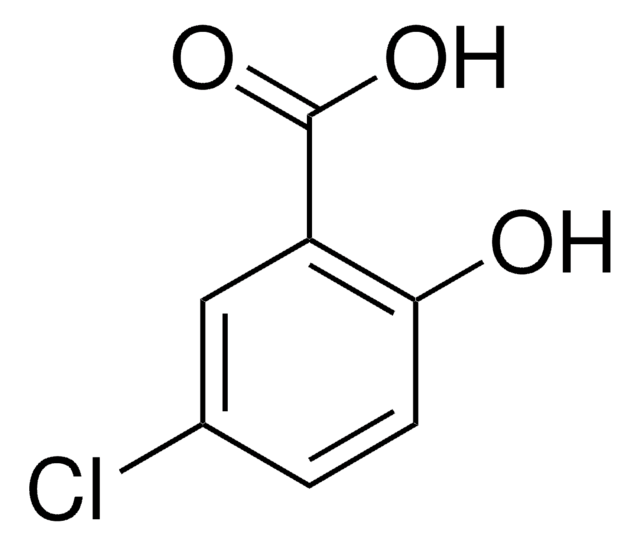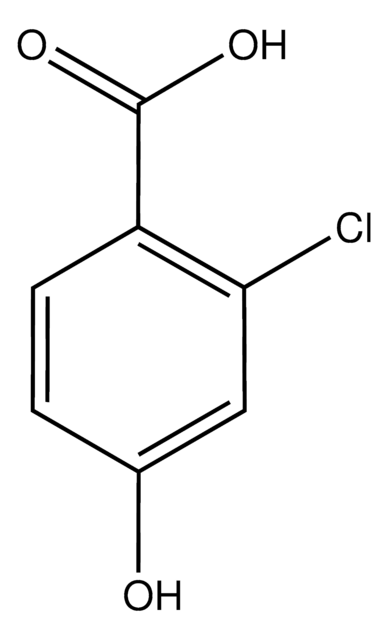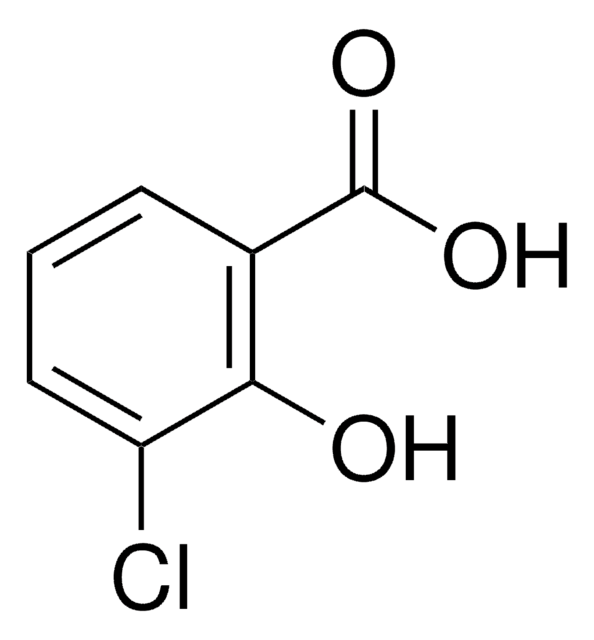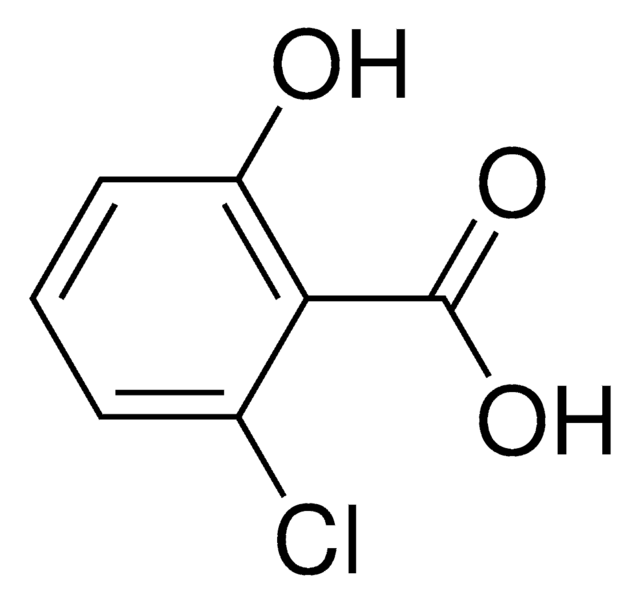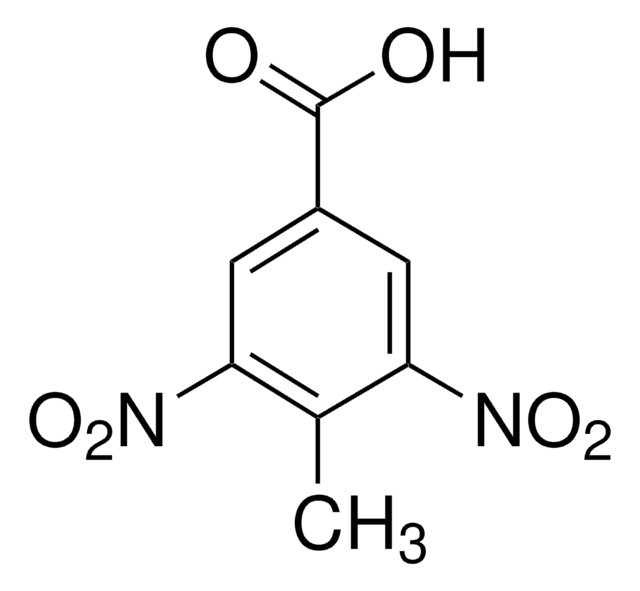All Photos(1)
About This Item
Linear Formula:
ClC6H3(OH)CO2H
CAS Number:
Molecular Weight:
172.57
EC Number:
MDL number:
UNSPSC Code:
12352100
PubChem Substance ID:
NACRES:
NA.22
Recommended Products
Assay
93%
form
solid
mp
210-212 °C (lit.)
functional group
carboxylic acid
chloro
SMILES string
OC(=O)c1ccc(Cl)cc1O
InChI
1S/C7H5ClO3/c8-4-1-2-5(7(10)11)6(9)3-4/h1-3,9H,(H,10,11)
InChI key
LWXFCZXRFBUOOR-UHFFFAOYSA-N
Application
4-Chlorosalicylic acid was used in sensitive spectrofluorometric determination of terbium in mixed rare earths. It was used in preparation of poly(4-chlorosalicylic acid-formaldehyde) via condensation with formaldehyde.
Biochem/physiol Actions
4-Chlorosalicylic acid shows potent antibacterial activity against Escherichia coli.
Signal Word
Warning
Hazard Statements
Precautionary Statements
Hazard Classifications
Eye Irrit. 2 - Skin Irrit. 2 - STOT SE 3
Target Organs
Respiratory system
Storage Class Code
11 - Combustible Solids
WGK
WGK 3
Flash Point(F)
Not applicable
Flash Point(C)
Not applicable
Personal Protective Equipment
dust mask type N95 (US), Eyeshields, Gloves
Choose from one of the most recent versions:
Already Own This Product?
Find documentation for the products that you have recently purchased in the Document Library.
4-Chlorosalicylic acid-formaldehyde polymer as a polymeric ligand.
Patel HS, et al.
Makromol. Chem., 106(1), 223-237 (1982)
Sonja Pawelczyk et al.
Journal of microbiological methods, 75(1), 117-126 (2008-07-03)
4-Chlorosalicylate (4-CS) can be degraded completely by a bacterial consortium consisting of Pseudomonas reinekei (MT1), Achromobacter spanius (MT3) and Pseudomonas veronii (MT4). The fourth species Wautersiella falsenii (MT2) is thought to act as a 'necrotizer' of the community. Single cell
Roberto A Bobadilla Fazzini et al.
Environmental microbiology, 12(9), 2436-2449 (2010-04-22)
The high complexity of naturally occurring microbial communities is the major drawback limiting the study of these important biological systems. In this study, a comparison between pure cultures of Pseudomonas reinekei sp. strain MT1 and stable community cultures composed of
Roberto A Bobadilla Fazzini et al.
Proteomics, 9(8), 2273-2285 (2009-04-22)
In this study, the stable consortium composed by Pseudomonas reinekei strain MT1 and Achromobacter xylosoxidans strain MT3 (cell numbers in proportion 9:1) was under investigation to reveal bacterial interactions that take place under severe nutrient-limiting conditions. The analysis of steady
Inhibitory effects of 4-chlorosalicylic acid on mushroom tyrosinase and its antimicrobial activities.
Han P, et al.
Food Chemistry, 107(2), 797-803 (2008)
Our team of scientists has experience in all areas of research including Life Science, Material Science, Chemical Synthesis, Chromatography, Analytical and many others.
Contact Technical Service